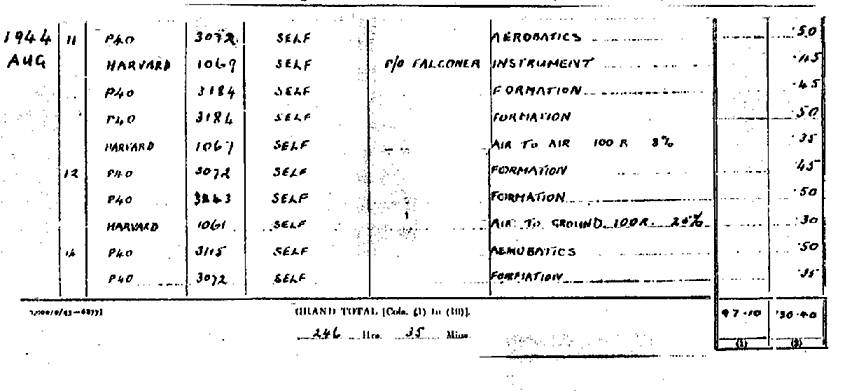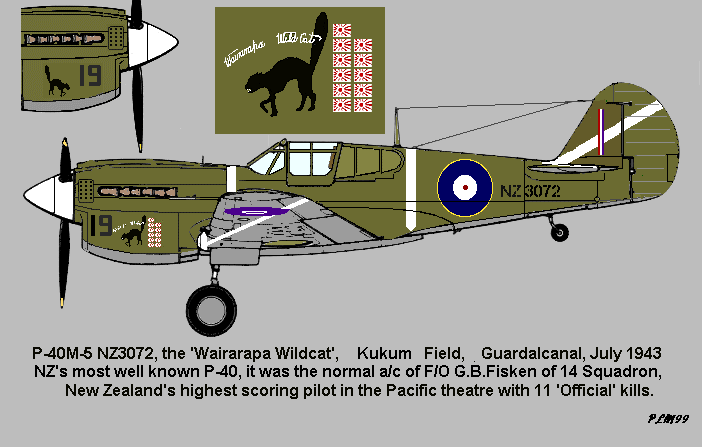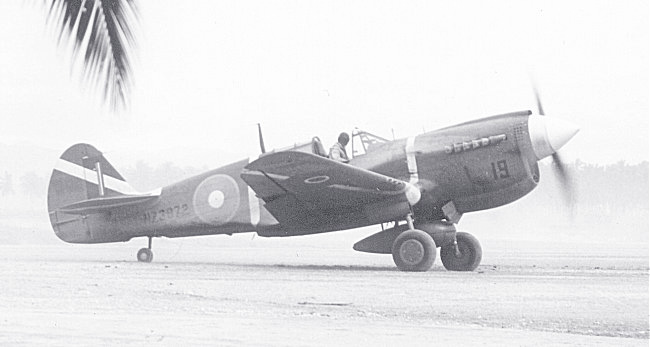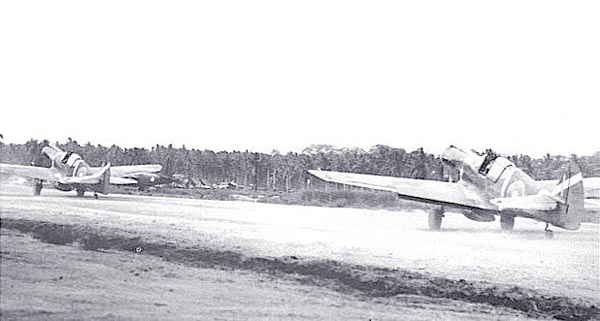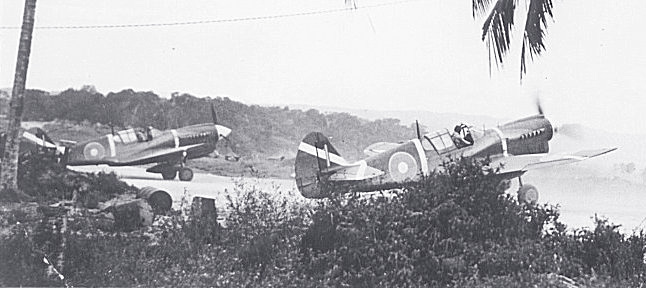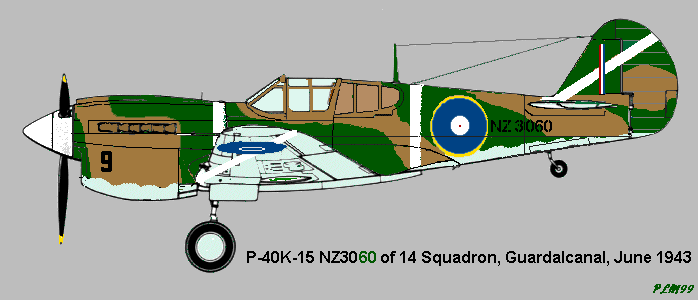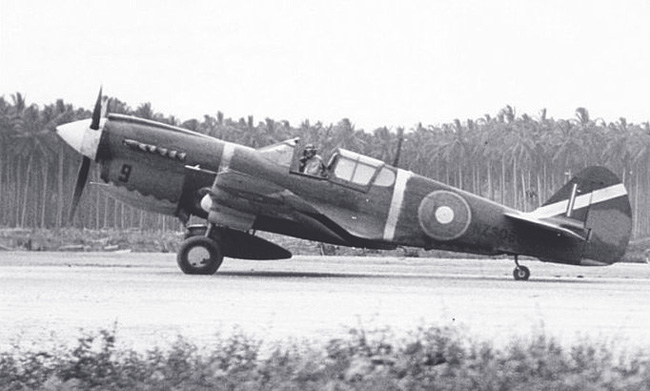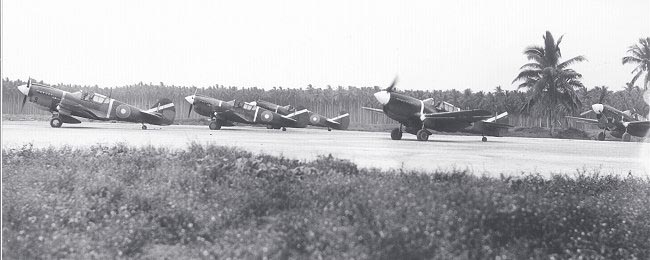|
Geoffrey
Bryson Fisken was born in Gisborne on February 17th, 1916, the son of
a station-owner. During the thirties he learned to fly in a DH60
Gypsy Moth.
In
1939 Fisken was working for a farmer in Masterton and on the outbreak
of war, he volunteered for flying duties. As his job was a reserved
occupation, he was not released until early 1940 by his employer for
service in the RNZAF.
After completing his flying training at Bell Block, New Plymouth, and
at Ohakea, he passed out in January 1941 as a Sergeant Pilot.
Malaya
/ Burma / Singapore February 1941 - February 1942
In February
1941 he was posted to Singapore, where he was attached to the RAAF at
Sembawang for a conversion course on to Wirraways, and then on to Buffalos.
Two RAF squadrons, 67 and 243, were in the process of being formed at
Kallang, and Fisken was posted there. These embryo squadrons
had only a few pilots (mostly New Zealanders, with RAF Commanders) and
did not form into separate units until more personnel had arrived from
New Zealand where they were in training.
In October 1941, Fisken was moved to Mingaladon, in Burma, with 67 Squadron
but returned a few days later to Kallang to serve with 243.
After
the Japanese invaded Malaya on December 8th, 1941, the squadron was
quickly into action. Fiskens' aircraft was a Brewster B339E Buffalo
serialed W8147 and coded WP- O .
One
Ki-27 claimed on January 12th, 1942.
One 'Zero' claimed on January 14th, but aircraft damaged when
the Japanese plane exploded underneath. W8147 apparently was not badly
damaged, as Fisken flew it again on January 17th when he claimed
a G3M, and shared in the destruction of a further two G3M's.
On January 21st, again flying W8147, he claimed another 'Zero'.
(W8147 was shot down later on the same day when being flown by another
pilot, Sgt. Victor Arthur).
By
the end of January, 243 Squadron had virtually ceased to exist as a
unit due to severe losses, and the surviving pilots, Fisken amongst
them, took their aircraft and attached themselves to 453 (RAAF) Squadron.
On February 1st he claimed a 'Zero' while flying W8237.
On February 6th, he claimed a further 'Zero' while flying W8143,
but was wounded in the arm and leg during this action, and soon after
was evacuated from Singapore.
Note:
In this theatre, almost all aircraft claimed as 'Zeros' were in fact
Imperial Japanese Army Ki43 'Oscars'.
(453
Squadron retired to Batavia in Java, in February 1942, and the remaining
personnel eventually reached Australia, disbanding on arrival at Adelaide
on March 15)
|
BREWSTER B339E BUFFALO W8147 (WP O)
|

|
W 8147
from a painting by Chris Thomas on the cover of 'Bloody Shambles' Volume
1.
|
Colours were
standard RAF Dark Earth/Dark Green over Sky. Squadron codes were
Light Grey, with a Sky fuselage band. Serials were Black.
All roundels were standard RAF types, 'A1' type on the fuselage,
'B' type on the upper wings, and 'A' type on the wing under surfaces.
Many of these Singapore based Buffalos had the wing under surfaces painted
in a half Matt Black/Sky scheme, but I can't confirm whether Fisken's
a/c had this scheme.
Pacific
- April 1943 - December 1943
In late
March, with other Kiwi pilot survivors from 243 and 488 Squadrons, Fisken
returned to New Zealand. After a short stay at Wigram in Christchurch,
he was posted to Ohakea.
Fisken along with some of the other pilots who had flown in Singapore
and Malaya, were to provide a nucleus for the formation of 14 Squadron,
the first New Zealand fighter squadron to be formed for service in the
Pacific theatre. The squadron's first Commanding Officer was Squadron
Leader John Mackenzie DFC who had served in the RAF. At this time,
Fisken was commissioned as a Pilot Officer.
14
Squadron then moved to Masterton and trained on Harvards before receiving
its Kittyhawks.
In April 1943 the squadron was posted to Espiritu Santo in the New Hebrides.
It moved to Guadalcanal on June 11th, and the next day, on its first
combat mission, shot down six enemy aircraft, of which two 'Zeros'
were destroyed by Fisken. Whilst patrolling over Rendova on July 4th
he claimed another two 'Zeros' and a G4M 'Betty' bomber.
In
September 1943 Fisken was awarded the DFC. He was then invalided out
of the RNZAF in December due to the wounds he had received in Singapore.
He returned to farming, and still lives in the lower North Island area.
Fisken
was the top scoring Commonwealth pilot against the Japanese, with
his final tally of eleven aircraft destroyed and another five probably
destroyed
NOTE:
This text has been adapted from the notes on Geoff Fisken at the NZ
Fighter Pilots Museum Web site: http://www.nzfpm.co.nz/
and from 'Bloody Shambles'Volume 1 by Christopher
Shores and Brian Cull with Yasuho Izawa.
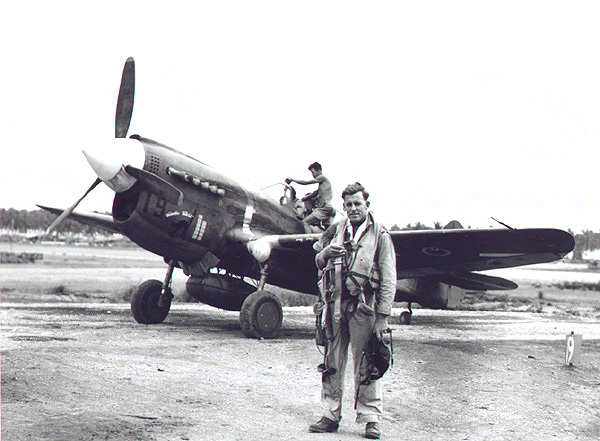
|
Flying
Officer Geoff Fisken with NZ3072 at Guadalcanal, in 1943. Note: The
RNZAF pilots used mostly American flying gear, but with the British 'Mae
West' life jacket
|
.
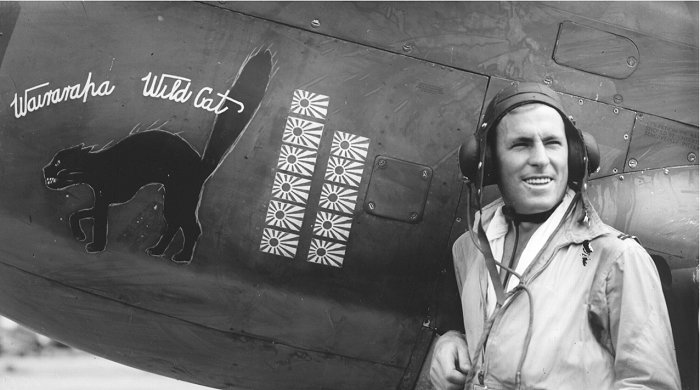
|
Geoff
Fisken photographed alongside the cowl of NZ3072. The cats' outline
was apparently added with chalk to enhance it for the photo. 11 victory
flags appeared on the cowl, port side only. The cat and number '19' appeared
on both sides
|
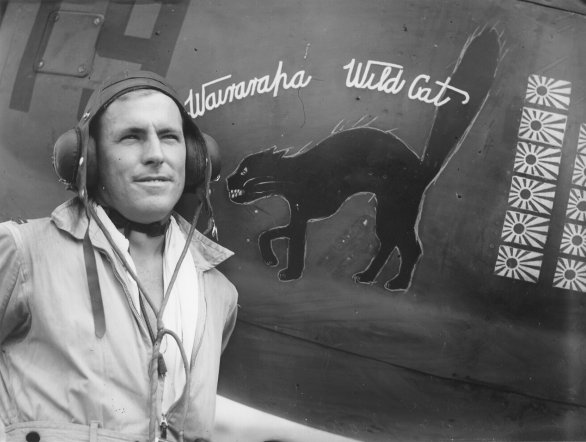
|
Another
often published shot of Geoff and the Cat
|
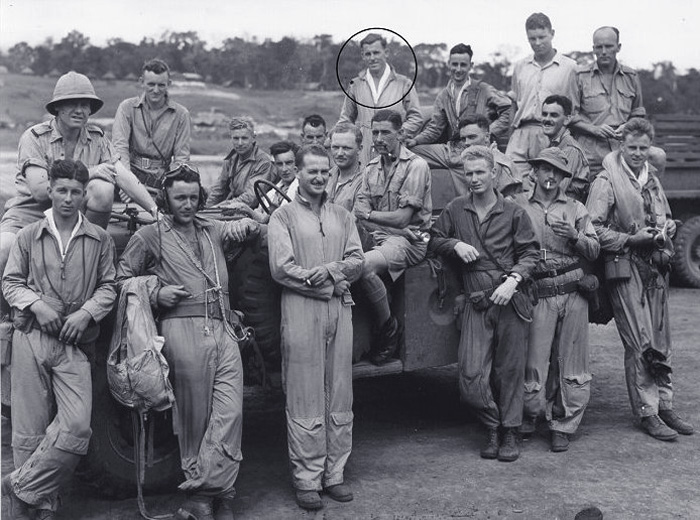
|
14
Fighter Squadron personnel, Guadalcanal, June/July 1943. Geoff Fisken circled.
Note mixture of RAF and U.S. uniforms
|
|





